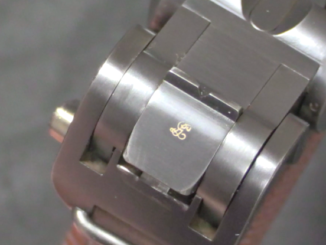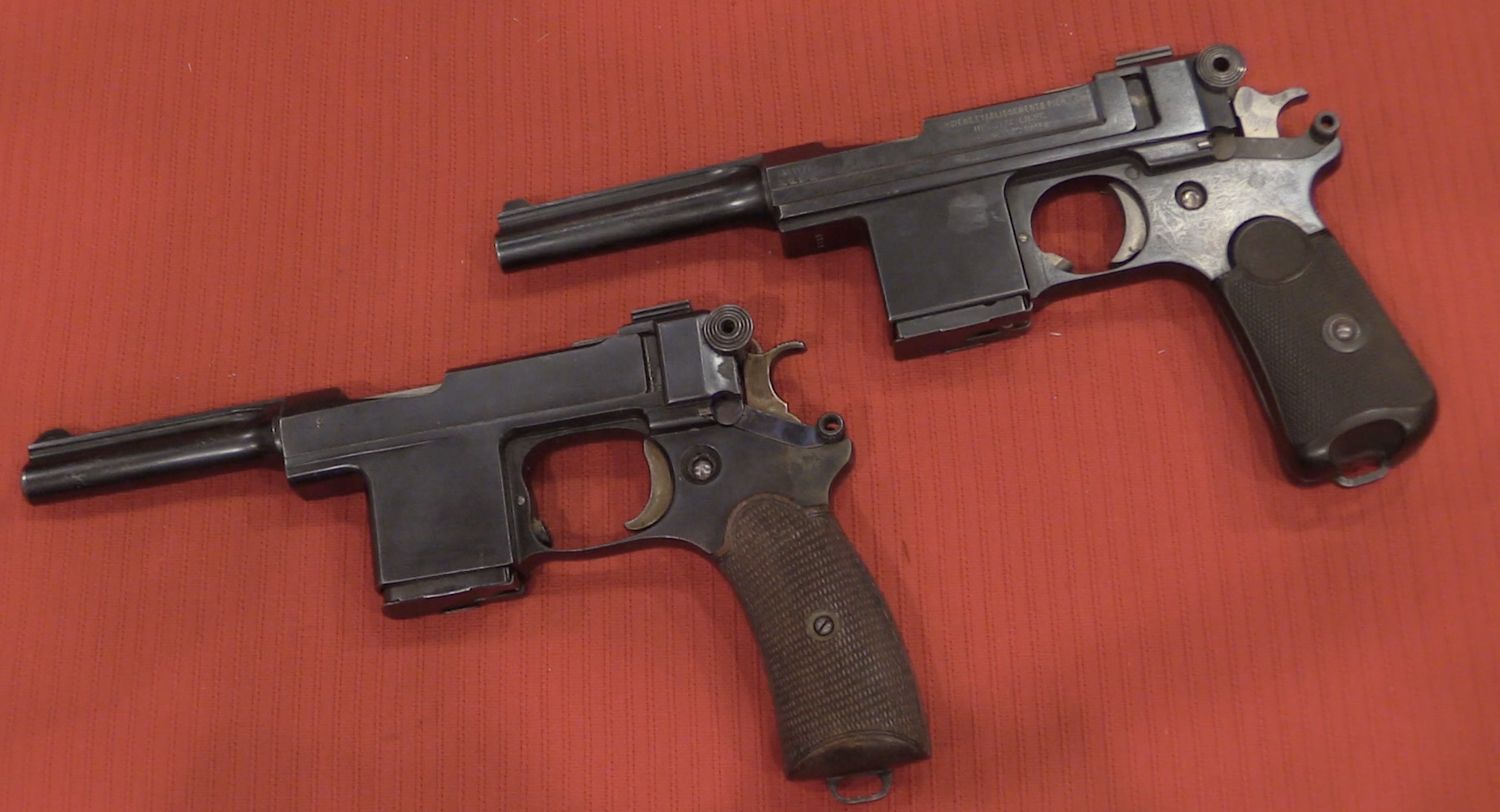Simson & Co of Suhl was chosen as the sole contractor legally allowed to manufacture and rework military small arms for the German military under the Versailles treaty. They acquired the P08 Luger tooling from the Erfurt arsenal, and began small volume P08 production in 1925. They would product just under 12,000 pistols total between 1925 and 1934. The first 600 were made with 1925 chamber dates, and the first 100 or so in 1926 were also dated, but then the markings changed to a blank chamber for the rest of the production run. These were all Army and police pistols, with no commercial production.
This particular example is an interesting outlier, with a 1926 chamber date but a serial number (424) that should be in 1925. It is likely that this gun was set aside for quality control reasons (it also has an RC stamp on the frame) and not completed and marked until early 1926.




Perhaps Simpson got the contract in the attempt to actually follow the Versailles limitations. While much of the Prussian elite were undermining the treaty before the ink was dry, perhaps a smaller, more ‘outside’ company looked better, or WAS better, for those in the government who weren’t gearing up for the next war.
Ian, Between 1915-1917 Vickers Ltd made about 10,000 Lugers for the Dutch. A difference of opinion with the Germans caused the Dutch to seek out the British to make the pistols. If I’m not mistaken that would indicate 5 sets of tooling dedicated to Luger manufacture. I’m citing “Lugers At Random” pages #144-145. Love your work, Histan.
Regarding the political connections it should be pointed out that the selection of the companies authorized to manufacture military equipment was done exclusively by the Inter-Allied Military Control Commission, not by any German authority.
The East German journal “militärtechnik” tried to create the impression that the Simson family had, via marriage, connections to the family of the IMCC head, General Nollet. Luger history authority Joachim Görtz researched into this allegation and found it had no truth in it whatsoever.
Ulrike Schulz, who wrote an excellent book on the history of Simson 1856-1993 came to the conclusion that Simson was mostly selected because it had absolutely no experinece in the field of machine gun manufacture and the IMCC considered this to be the ideal source to supply the Reichswehr with machine guns. Considering the dominance of narrow minded decisions in the work of IMCC (blanks are war material just like ball cartridges; an infantry company is authorized to have no more than 4 bicycles, for example) I tend to believe her.
I’ve wondered if that machine gun background is a green screen, or if Morphy’s just leaves an M60, an MG42 and an M2 just lying about. Might be the latter.
Vickers set-up there own production line as MILO states above, for a Dutch East Indies contract. However I thought this was in the 1920’s, when Vickers were trying to keep their factory in Crayford employed with work.
The files on this are located within the Cambridge University Library , Vickers and Vickers Armstrong Archive. I have read files from this collection myself.
I have wondered why Vickers did not continue to make a further run of Luger’s which could have been sold commercially. While its true that the U.K. economy was depressed in the 1920’s, more so in fact than the 1930’s, and the Firearms Act of 1920 severely slowed handgun sales in the U.K. I would have thought they could have sold a couple of thousand pistols somewhere, commercially.
Regards
Alan
I thought that the Vickers Lugers were assembled in England from DWM parts shipped over just after the war, when DWM couldn’t build complete guns due to Treaty and ACC rules.
Mr McCollum, regarding all lugers made on four original sets of tooling.
Peter L Stanton, currently of Edge Precision, Manufactured Stainless steel lugers in Huston TX, I think they where sold/commissioned by Stoeger Industries.
Peter L Stanton’s video account.
https://youtu.be/-OvZC7XSKps?t=608
20,000+ Stainless steel luggers made
https://youtu.be/-OvZC7XSKps?t=664
Stoeger Industries
https://en.wikipedia.org/wiki/Stoeger_Industries
Mr McCollum, regarding the barrel marks 8:35, the 8.8mm on barrel is the bore caliber it is 0.3464’’ that is 0.0085’’ under the nominal bullet diameter of 0.3550’’, the groove caliber should not be under the bullet diameter unless the bullet is made entirely from lead ally & then the bullet should only be 0.001’’ larger.
Although misuse abounds Caliber exclusively describes an internal measure, diameter exclusively describes an external measure.
Caliber is the distance between two points of a cylindrical or spherical void, measured transverse of centerline for cylinder & throw centerline for sphere.
Nicely done Ian. Especially liked the background on the Simpson family and the subsequent permutations of the company. Do you know was Mr Simpson involved in the arms industry here in the US after immigration?
Steve
Staghounds
A UK based academic went through the files in the Vickers Archive in Cambridge an came to the conclusion that Vickers did set-up their own production line, at considerable cost. Vickers lost money on the contract and began to realize this would happen before production started but they carried on with the project in the hope of getting more orders, which never eventuated.
There is an article iabout this topic in the Historical Brechloaders Small Arms Assn, annual magazine.
Mr McCollum, Boring videos (see below) are my kind of video, but alas I have yet to see a real “Boring Video” published by you.
My Job Is Getting A Little Boring: by Edge Precision
https://www.youtube.com/watch?v=O9TiWxVAnEk
8.8mm = 0.3465″…. this is most certainly the BORE diameter.
Add another probable 0.008″ for the rifling grooves and you get 0.3545″ which is pert near the standard 0.355″ jacketed bullet size.